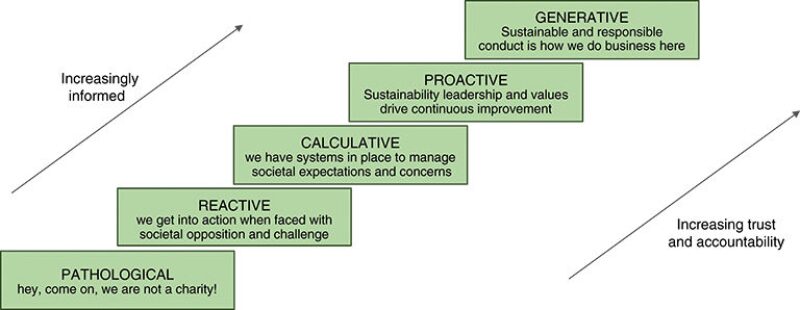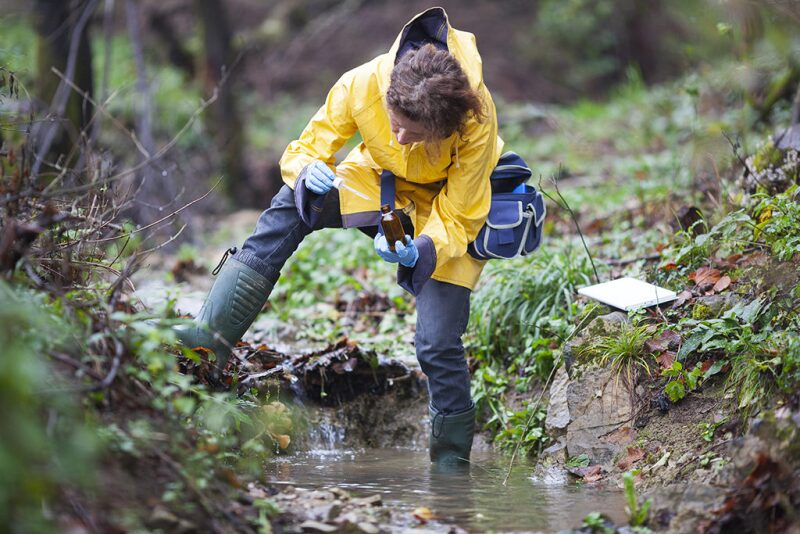Editor’s Note: The oil and gas industry is under public scrutiny like never before on a host of health, safety, and environmental issues. These concerns are already affecting how companies operate and interact with the public. This series is intended to shed light on how the industry is actively confronting these challenges or how it should address them going forward.
I recently completed my season as SPE Distinguished Lecturer on the topic of managing nontechnical risks, or, in other words, managing business delivery in alignment with the broader interests of the societies in which we operate. It was a distinct privilege that took me to 18 countries and 30 engagements with oil and gas professionals around the world.
Among my many takeaways, three stand out:
- Everywhere, independent of geography, culture, or political situation, the oil and gas industry is facing ever more regulatory scrutiny, higher expectations for responsible business conduct, and an increasingly vocal population. Many in my audiences saw this as a bigger challenge than technical and commercial ones.
- There is no universal and proven approach to effective management of societal expectations and relationships. Companies large and small are experimenting their way forward, with as many successes as failures. Nobody can guarantee success up front.
- There is no common terminology. Sustainability, sustainable development, corporate social responsibility, social license, societal or nontechnical risk management are all used in this universe and, by and large, have the same goal, i.e., developing and maintaining long-term, mutually beneficial relationships with societies in which we operate thanks to responsible social and environmental performance. I am not too worried what it is called as long as it yields the desired results. In this article I will be using both the terms “sustainability” and “societal relationships.”
Implementing Sustainability is Tough
Most companies realize that a glossy annual sustainability report or a charity program directed from headquarters is no longer enough. Society expects deeds and not words. A real contribution to sustainability needs to be expressed in the way we design, construct, and operate; in other words, it needs to be fully integrated in the way we do business.
However, as the spectrum of the 17 UN Sustainable Development Goals shows, sustainability covers a broad array of topics, from respecting human rights, delivery of clean and affordable energy, supporting climate action, to protecting the environment and supporting communities. Every discipline and department in the company, from drilling site to corporate office, has a stake in the contribution to sustainability.
Those companies that have embarked on the integrated approach quickly run into difficult questions, such as:
- Who should take accountability and hold the budget? Sustainability department or the line?
- Should sustainability criteria be woven into existing policies, standards, and processes, or should we develop a new sustainability process?
- Should sustainability considerations feed into and influence business decisions in balance with technical and commercial considerations?
- Are current behaviors and culture getting in the way of implementation?
These companies find out that integrating sustainability in the core business is not a quick fix, but a complex journey that touches all parts of their business and requires new ways of alignment and cooperation.
Do these challenges sound familiar? Yes! Safety has gone through similar challenges, and we can learn a lot from that journey.
The Safety Maturity Ladder
R. Westrum and P.T.W. Hudson (SPE Distinguished Lecturers during 2012–2013) recognized that becoming truly safe follows a long and winding road that requires nothing less than a deep culture change (Fig. 1). Together with the oil and gas industry, they developed a five-step evolutionary model that describes the stages that an organization will go through from denial (pathological) to an advanced safety culture (generative).

The five stages are almost self-explanatory, but let me highlight a few characteristics that are important for the sustainability analogy.
In the pathological stage, the organization only responds to legal requirements but essentially does not care about safety. In the reactive stage, safety is an afterthought and only addressed after a (serious) accident.
Then the realization sets in that accidents are not good for people nor business, and that safety needs to be managed. The organization enters the calculative stage and sets up systems and processes; safety management becomes risk-based and data gathering and reporting are organized. The calculative stage is a critical tipping point that marks the switch from organization of structure and processes to addressing culture change.
In the proactive stage, it is realized that accidents come with considerable human, physical, and financial cost and that prevention is key. Line management takes accountability for safety, the workforce is actively involved, and a learning culture is created.
Finally, in the generative stage, safety is carried out by everybody, and there is a state of chronic unease that requires constant vigilance; safety management is in the first place a moral obligation to employees and society.
The resemblance with the sustainability journey is striking!
Having a maturity ladder is helpful: it defines where you are now, where you should go next, and what the end-goal should be (Fig. 2).

Lessons for Sustainability
The safety journey offers a number of valuable lessons:
- Prevention is better than cure. Including key societal expectations in designs upfront is much cheaper than redesigning after court cases and delays.
- Line management should assume accountability for all aspects of business delivery, including the need to meet societal expectations.
- Sustainability should be integrated into existing business processes and feed into executive decision making.
- The program needs to be carried out by the entire workforce. This also includes contractors, because at most sites the public eye sees them rather than us.
- Develop a learning organization, in which incidents are investigated not to blame but to feed learning and improvement.
- Do not skip a stage of the maturity ladder. Each stage has it value and role and needs to be founded on the previous stage.
Hudson noted that the safety management system lends itself very well to include environment and health, and many companies have indeed expanded it to an integrated healthy, safety, security, and environmental management system. Hudson asked the question: Is there another stage to the safety ladder, or is the integrated approach the end of the story? I would argue that sustainability is the ultimate integration challenge.
Not All is the Same
A few things are different from safety:
- Safety needed to develop its own specific systems, processes, and tools. Sustainability does not need much new; rather it should ride on existing processes and borrow proven tools.
- Safety is a profession in its own right. Sustainability is the result of close cooperation among health, safety, security, environment and social performance, and then blended in with technical and commercial considerations. Developing sustainability, therefore, is much more an integration activity than a new discipline. I would be reluctant to add a new sustainability layer, but rather focus on developing a cadre of integration professionals.
- It is fine to take a risk-based approach in the early stages and focus on managing societal or nontechnical risks. We need to realize that at some point along the journey society should no longer be seen as a risk but a partner.
I believe that sustainability is the new safety. It will be at least as difficult to achieve, and will profoundly change the way we think and behave. As with safety, it will push us to a new, higher level of performance, with a distinct and positive impact on our bottom lines. Our safety pioneers found out long ago that it is wise to take the initiative and lead the way, rather than be reluctantly pushed forward by society and its regulators. Let’s heed these lessons.


